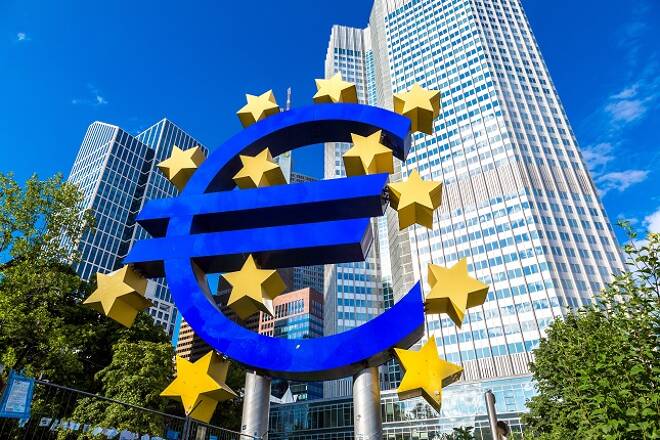Advertisement
Advertisement
The EUR/USD Tumbles as U.S. Rates Rise Ahead of Thursday’s ECB Meeting
By:
The EUR/USD moved lower, and is trading on the defensive as U.S. yields rise, with the 10-year pushing through the 3.02% level. This is driving the dollar
The EUR/USD moved lower, and is trading on the defensive as U.S. yields rise, with the 10-year pushing through the 3.02% level. This is driving the dollar higher, as the yield differential favors the greenback. ECB members were on the tape and it appears that there are several that are looking for rising rates.
Technicals
The EUR/USD pushed through trend line support on Monday, rebounded on Tuesday and accelerated lower Wednesday. Target support is seen near the September and January highs at 1.2089, and then the 200-day moving average at 1.2002. Resistance is seen near former support at the breakdown level near 1.2250, and then the 10-day moving average at 1.2304. Momentum is negative as the MACD (moving average convergence divergence) histogram prints in the red with a downward sloping trajectory which points to lower prices. The fast stochastic tumbled lower and is printing a reading of 5, well below the oversold trigger level which could foreshadow a correction.
ECB’s Mersch Said Inflation hasn’t weakened as much as projected
Mersch said “confidence has recently risen and convergence is being confirmed, partly because the temporary decline in the inflation rate has been weaker than our internal calculations he predicted when we had reduced the purchasing program from EUR 60 billion to EUR 30 billion”. Mersch added that “more resilience will follow eventually”. So more general comments on the inflation outlook than the initial headlines suggest and Mersch repeated the ECB’s mantra that “patience and persistence with respect to our monetary policy is required”.
The ECB Vasiliauskas more confident that it is time for QE transition
Vasiliauskas said “we have witnessed the strengthening of broad based growth and steadily declining unemployment, providing conditions for inflation convergence to our objective”. He added that this has increased his confidence that “it is time to transition from the asset purchase program”. At the same time, he added that the end of the program “should not be abrupt”, suggesting he is favoring a short taper in the last quarter of this year. “With respect to the sequencing, the start of the rate hikes will occur well past the end of the net purchases, leaving the reduction of reinvestments until the very end”. The ECB “intends to cautiously reduce the balance sheet in favor of financial market functioning. However, the balance sheet might remain larger than it was before the financial crisis”.
Recent U.S. Data has been Strong
U.S. reports revealed a surprisingly robust round of new home sales figures for Q1, both via a 4.0% March surge to a robust 694k clip and huge upward revisions, alongside a 1.7 April consumer confidence rebound to its second highest reading in 17 years of 128.7. We saw an April plunge in the Richmond Fed index to -3.0 from 15.0 in March and 28.0 in February however, with an ISM-adjusted drop to just 52.2 from 56.4 in March and an all-time high of 61.7 in February, hence undershooting the pattern of only slight pull-backs in the other available producer sentiment measures. The new homes sales figures join housing starts, permits, completions, existing home sales and construction employment in showing continued growth in Q1 after Q4 gains that appeared disaster-related. The confidence rise chased the steep climb in the weekly Bloomberg Consumer Comfort index in April to a three-week string of new cycle-highs, but defied April drops in Michigan sentiment and the IBD/TIPP index.
U.S. MBA mortgage market index sank
U.S. MBA mortgage market index sank 0.2% in data released earlier, accompanied by an unchanged reading on the purchase index and a 0.3% decline in the refinancing index for the week ended April 20. At the same time the average 30-year mortgage rate increased by 7 basis points to 4.73%, the highest since September 2013. The Fed’s Beige Book last week leaning to the hawkish side, along with heavy corporate issuance and oil prices continuing to chunder higher, kept yields heading higher into this week’s supply.
About the Author
David Beckerauthor
David Becker focuses his attention on various consulting and portfolio management activities at Fortuity LLC, where he currently provides oversight for a multimillion-dollar portfolio consisting of commodities, debt, equities, real estate, and more.
Advertisement
